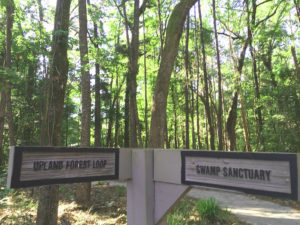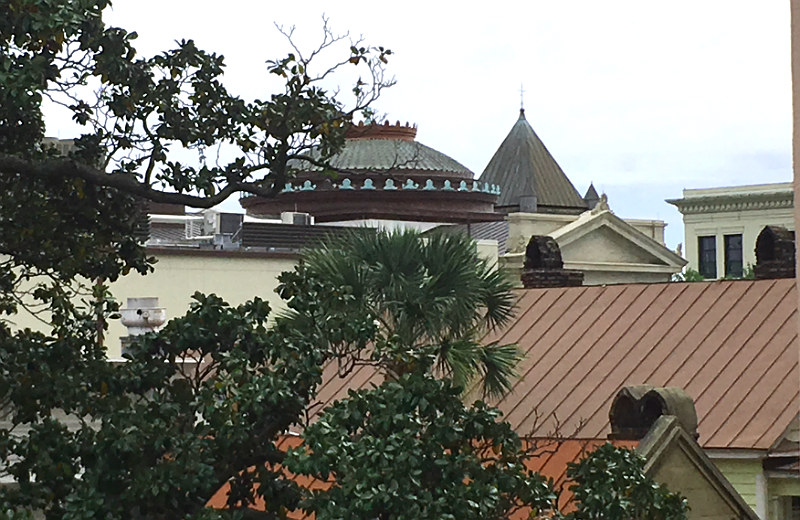My, my, this certainly is an interesting roofscape with hints of, perhaps, Turkey and France. But where is it specifically (more than just the town)? Try to identify where or what it is in this community. Send your guess to editor@charlestoncurrents.com. And don’t forget to include your name and the town in which you live.
Our previous Mystery Photo
 Our May 6 mystery, “Swampy clue,” generated interesting guesses, such as Beidler Forest or Cypress Gardens. Bud Ferillo of Columbia joked that the swamp was the Statehouse in Columbia.
Our May 6 mystery, “Swampy clue,” generated interesting guesses, such as Beidler Forest or Cypress Gardens. Bud Ferillo of Columbia joked that the swamp was the Statehouse in Columbia.
Hats off to several alert readers who correctly identified the location as Caw Caw Interpretive Center in Ravenel in Charleston County: Jay Altman of Columbia; George Graf of Palmyra, Va.; Chris Tweedy of Mount Pleasant; and Marnie Huger of Richmond, Va.
We also heard from Kristina Wheeler of West Ashley, who works at the park: “We had 50 species of birds on our Early Morning Bird Walk this morning and we walked right by this sign, while listening to several warblers and painted buntings singing.”
Graf provided some context:
According to chicagotribune.com, “Caw Caw Swamp, up the Ashley River 20 miles north of Charleston, is a dank place overgrown with cypress trees and sweet grass. Slave transplants from the rice-growing region behind the barrier islands of Sierra Leone and the other West African lands would have found it similar to home.
“In 2000, what remained of a 5,500-acre rice plantation on the swamp was made into a county-run interpretive park. It probably was no accident that West Africans were captured to work the rice plantations that drove Charleston’s economy. The men would have known when to plant rice crops and how to harness the water that drowned the land with every tide. The women would have known how to use winnowing baskets and mortars and pestles to get every last indigestible bit of hull off a rice grain.
“It’s hard to prove the Africans came here with all this knowledge of how to grow rice in their heads,” says Shawn Halifax, the county’s interpretive coordinator, but it makes sense that plantation owners went looking for slaves with the know-how they needed. “And, as it happens, if you go to Africa, you find they were cultivating rice exactly the same way there that they were here,” Halifax says.”
- Send us a mystery: If you have a photo that you believe will stump readers, send it along (but make sure to tell us what it is because it may stump us too!) Send it along to editor@charlestoncurrents.com.




 We Can Do Better, South Carolina!
We Can Do Better, South Carolina!
























